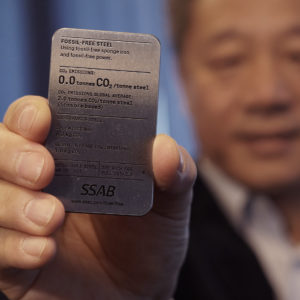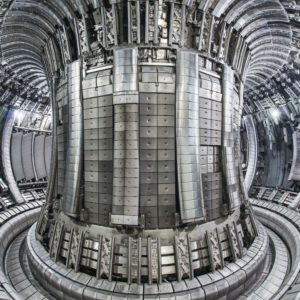James Brooks writes for TechXplore on green steel in Sweeden. “It begins with brown-tinged iron ore pellets that react with the hydrogen gas and are reduced to ball-shaped ‘sponge iron,’ which takes it name due to pores left behind following the removal of oxygen. This is then melted in an electric furnace.” Read the full...
Sulfur Battery Technology Could Make Electric Cars Go Three Times Further By 2024
"Another important aspect is of course price, and Theion is promising amazing reductions here too. 'Our price target is €30 per kilowatt hour in comparison to €90 per kilowatt hour today,' says Ehmes. This is because the materials Theion uses are cheaper, and so is the energy consumption. 'Production energy is 90% less.' With batteries making up around a third of current EV costs, this reduction would easily push total car prices well below that of internal combustion vehicles."
Blue Origin vets unveil startup seeking small solution to massive challenge of fusion energy
Lisa Stiffler of GeekWire reports on an innovative nuclear fusion company. “The system that Avalanche Energy is developing would measure about the size of a large shoe box (one-foot diameter, two-feet long). It could be deployed as multiple units to power cargo ships, airplanes and other sectors of the economy that are going to be...
Can robotic hives help save the world’s bees?
"Beewise currently offers the product to farmers for a $400 monthly RaaS fee (plus an initial $2,000 delivery/setup fee). That includes 24 colonies and ongoing maintenance. In return, the technology promises benefits like improved bee yields and pollination of surrounding plants — as well as, hopefully, a net benefit to embattled bee populations."
Shopify Puts Up Cash for Rooftop Carbon-Capture Machines, Tree-Planting Drones
"America’s roughly 2 million cooling towers remove heat from HVAC systems and industrial processes by bringing hot water into contact with a stream of air. Noya Inc., a San Francisco startup founded in 2020, has developed a system that captures carbon dioxide from those air currents. The gas can then be pressurized so it can be moved elsewhere to be stored underground or sold."
How Ammonia Could Help the World Transition to Clean Energy
"Mayer said the advantage ammonia offers over hydrogen is that it is a liquid at moderately low temperatures and can be stored as liquid under relatively low pressure, similar to how liquefied petroleum gas (LPG) is stored. Concerning how the ammonia is used, Mayer said there are two possible ways: ammonia can be burned directly or it can be 'cracked,' that is, decomposed over a catalyst, back to hydrogen."
How a breakthrough in geothermal could change our energy grid
"If Altarock is going to reach those super hot temperatures beyond Newberry, they’re going to need to drill deeper. And that’s really hard to do with conventional drills. Instead, they’re hoping to use another type of new technology that sounds like science fiction: A heat ray to melt rocks. It’s called a millimeter wave — it’s kind of like a laser, in a different part of the spectrum."
Market Innovations Make Nuclear An Energy Crisis Solution
"Whether you care about combating climate change, further securing American energy independence, or reducing energy costs for American families, these nuclear innovations can address the current energy crisis plaguing both the U.S. and Europe."
The 203 ft wind turbine blade GE built is the world’s largest
"The 203 foot (62 m) blade uses thermoplastic resin from Arkema and glass fabrics, from Owens Corning, partner companies in the ZEBRA project. By combining the two, the project claims to achieve the performance levels of a regular wind turbine with the added benefit of being recycled at the end of its lifetime."
This Norwegian start-up makes carbon-negative roads
"The process starts with recycling. Instead of trucking in new materials when a damaged stretch of asphalt needs repair, the company uses a machine that grinds up the top layer of the existing road. The equipment can also be used with concrete, another high-carbon material, as long as the concrete isn’t reinforced with steel. Then, the company uses lignin—a material in plants that’s a major byproduct of the paper industry—to glue the crushed material together."









